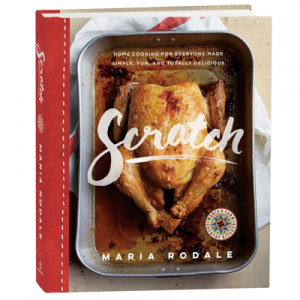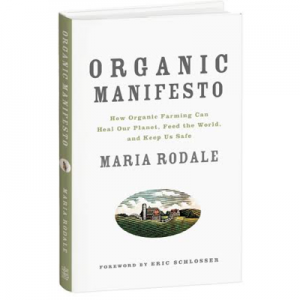by guest blogger Maya Rodale. I don’t care about the nutritional differences between organic and conventional produce. I buy organic because I like supporting cleaner air, cleaner water, fewer toxins released into the environment, and the creation of an organic, sustainable food system that will feed future generations. Now, if only organic food could get some good PR, even with all this in its favor.
Tag Archives | Organic Issues

Casting Doubt on Organic Food

Help Honey Bees Survive This Winter
By guest blogger Heather Mattila. Honeybees are far and away the most important pollinator in today’s agricultural landscape. They pollinate more than 400 crops worldwide, help to create about a third of the food we eat, and contribute an estimated $12 billion to our nation’s food supply. But where do they go in winter? The answer might surprise you!

Why GE Labeling Is
Monsanto’s Worst Nightmare
by Marcia Ishii-Eiteman. The dirty little secret behind GE crops is that they are marketing engines for the pesticide industry. Whatever the ads and manipulated media spots say, this is why Monsanto et al. are pulling out all the stops to stop Prop 37, the California Right to Know Genetically Engineered Food Act, which would permit companies to label foods made with genetically engineered (GE) crops.

The Secret Is in the Soil
by guest blogger Coach Mark Smallwood. The headlines are extreme: “Broiling Heat,” “Punishing Drought,” “Worst in 50 Years.” And the images are even worse. Miles of dry, cracked fields, crispy cornstalks, and stoic farmers holding tiny ears of kernel-less corn. More than half of the country is experiencing drought conditions, and counties in more than 25 states have been declared crop disasters by the U.S. Department of Agriculture (USDA).

Drift Happens
by Marcia Ishii-Eiteman. Imagine an invisible cloud of a cancer-causing 2,4-D weedkiller drifting slowly across your state. Well, one just blew 100 miles across California. How much of that drifting cloud settled on play structures, parks, schoolyards, and clothes drying on the line on the hot summer day? It’s hard to tell, but this invisible threat puts us all at risk.

People Don’t Want to Eat Pesticides
by guest blogger Alex Formuzis. Millions of Americans have come to rely on Environmental Working Group’s Shopper’s Guide to Pesticides in Produce so they can eat plenty of healthy organic and conventional fruits and veggies without a bunch of pesticides. But the Alliance for Food and Farming, a front group for pesticide sprayers, is demanding that we cease publishing our list immediately.

Total Recall
by guest blogger Coach Mark Smallwood. A crib rail pinches a finger and in short order the product is recalled. Why isn’t it the same true for 2,4-D or glyphosate? Why don’t we hold toxic, man-made chemicals to the same sort of standard we hold other products?

Create an Edible Ecosystem: No Fertilizer or Pest Control Needed
by guest blogger Kristina Jones. The idea behind an “edible ecosystem” garden is that it’s a different but complementary approach to organic farming that mimics a natural ecosystem, like a forest, but with food plants instead of trees and shrubs. Nobody fertilizes the forest or sprays pesticides, but the oaks still make gazillions of acorns. So we’re learning to garden like a forest.
Scratch
Raised on America’s first organic farm, Scratch author Maria Rodale learned how to make everyday favorites from, yes, scratch — the way you remember them; the way they turn out best.
Order NowMost Popular
Organic Manifesto
Drawing on findings from leading health researchers as well as conversations with both chemical and organic farmers from coast to coast, Maria Rodale irrefutably outlines the unacceptably high cost of chemical farming on our health and our environment.
Order Now


